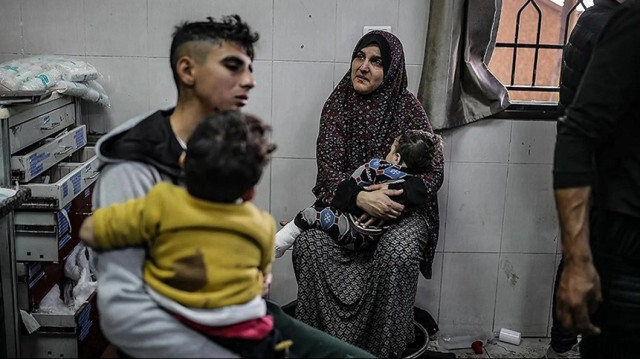
- Between 3,105-4,050 amputations have occurred, according to WHO
- At least one-quarter, 22,500, of those injured in Gaza by July 23 estimated to have life-changing injuries, says spokesperson
The World Health Organization (WHO) said Thursday that severe limb injuries are the main driver of rehabilitation needs in the Gaza Strip with 13,455-17,550 victims estimated to be injured.
WHO spokesperson Richard Peeperkorn told reporters in a virtual news conference that many of those who have been injured have more than one injury, according to the latest analysis by the UN agency that focused solely on new injuries sustained since Oct. 7, not including pre-existing chronic conditions and impairments before the conflict.
Between 3,105 and 4,050 amputations have occurred, said Peeperkon.
Regarding life-changing injuries, he said at least one-quarter, or 22,500, of those injured in Gaza by July 23 are estimated to have life-changing injuries.
He said large surges in spinal cord injuries, traumatic brain injuries and major burn injuries contribute to the overall number of life-changing injuries, which includes many thousands of women and children.
"The huge surge in rehabilitation needs occurs in parallel with the ongoing decimation of the health system," he said. " We urgently need assistance in this area of rehabilitation."
He noted that Gaza's only limb reconstruction and rehabilitation center, located in the Nasser Medical Complex, became non-functional in December because of a lack of supplies and specialized health workers being forced to leave in search of safety. The facility was later damaged following a raid in February.
The spokesperson, citing reports, said 39 physiotherapists have been killed as of May 10.
The analysis focused solely on new injuries since the escalation of hostilities last October. Tens of thousands of Palestinians in Gaza, however, were already living with pre-existing chronic conditions and impairments before the attacks began, putting them at significant risk due to the lack of appropriate services.
- Polio vaccination campaign reached more than 550,000 children
Peeperkorn said 552,451 children were vaccinated as part of a polio campaign in Gaza, not including the last-day numbers as the effort is set to end Thursday.
He stressed that despite struggles faced on the first campaign day in the north, when WHO teams had been in a holding pattern because of Israeli restrictions and evacuation orders, he said the UN agency's personnel managed to get into Gaza the following day and have so far vaccinated 105,909 children.
He noted that the number of vaccinated children was 190,572 in the central area and 250,820 in the south.
Asked by Anadolu how the delay and evacuation orders affecting the humanitarian pause zones in the north affected the WHO's set target and operation, Peeperkorn said: "We saw on the first day in the north something like 81,000, then 24,000 (on the second day). So, we expect maybe today, another between 5,000 and 10,000, but that will not be more."
He said every zone received a bigger turnout on the first day, but then it decreased. He noted there has been over-vaccination in the central zone due to previous evacuation orders, resulting in some patients from the north and south bringing children to the central zone because of movement.
Peeperkorn noted the importance of post-campaign monitoring but was pleased with the efforts of the WHO.
"I think with the technical committee and myself, we are happy with this polio campaign, and I think we are also quite confident that we reach an enormous amount of children in this short time."
He is confident that the WHO "probably" reached the target of vaccinating more than 90% of children, and hopes to repeat it in four weeks when a second dose is required.
Deepak Kumar, who works on the polio campaign in Gaza, responded to the question by Anadolu, and said the first two days of vaccination in the north contributed to "approximately 18 to 19% of the entire coverage."
Kumar added that the WHO also reached those outside the humanitarian pause zone through predestined, fixed vaccination sites where WHO missions were carried out.
He said the agency was closely reviewing the data "until we were confident that we have reached more than 95% of coverage, which we are today."
Peeperkorn provided details about the second part of the campaign and said by then the teams would have a better overview of what is the target population in all zones.
"We've had those discussions, of course, with all parties, and they are very well aware that in four weeks time, we start a second round," he said.
He noted the date is not decided and the technical committee is still analyzing, including the mentioned day of Oct. 14.
"We will also have those ongoing discussions on this area of specific humanitarian pauses. By then, I would hope that we don't need those discussions anymore," he said, in hopes of a cease-fire.













